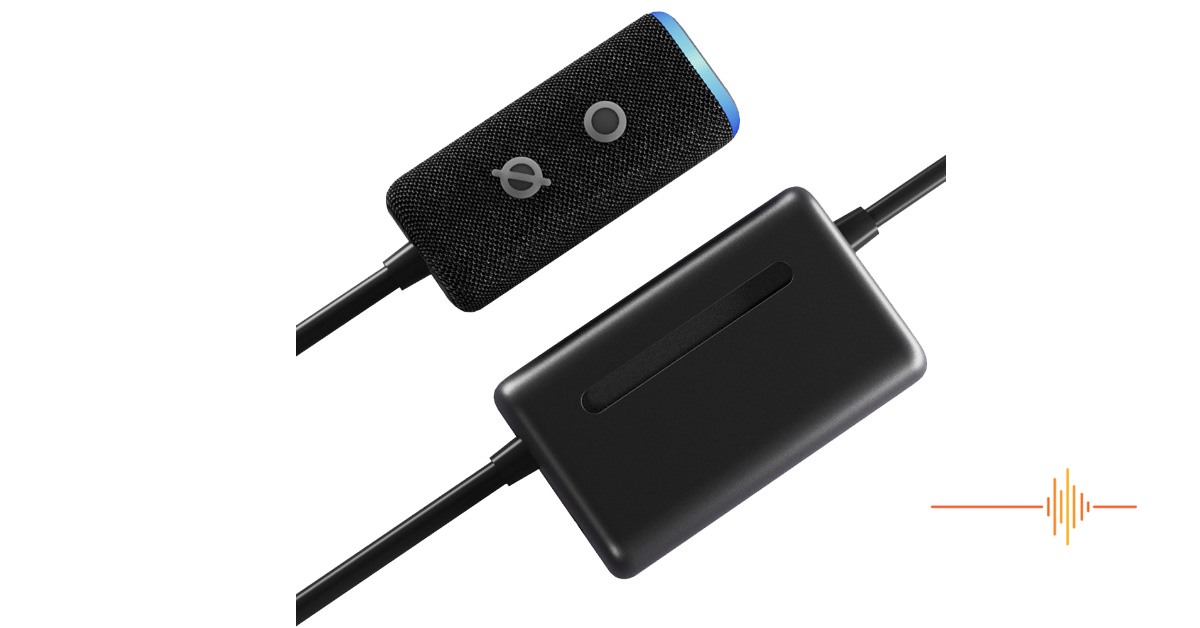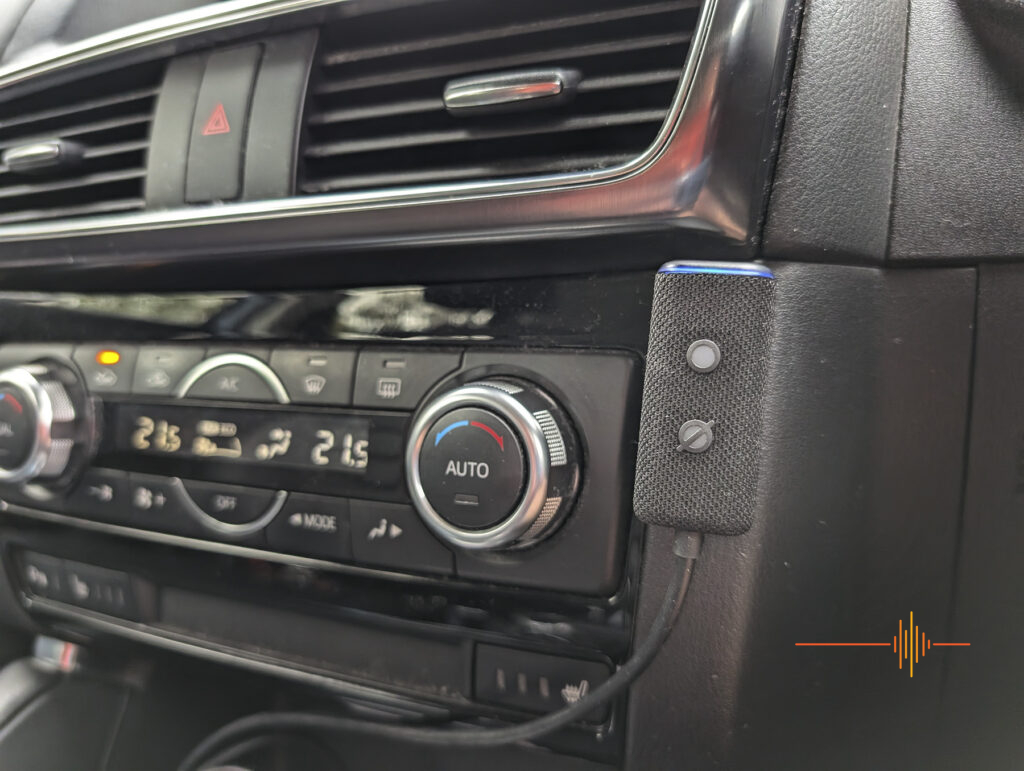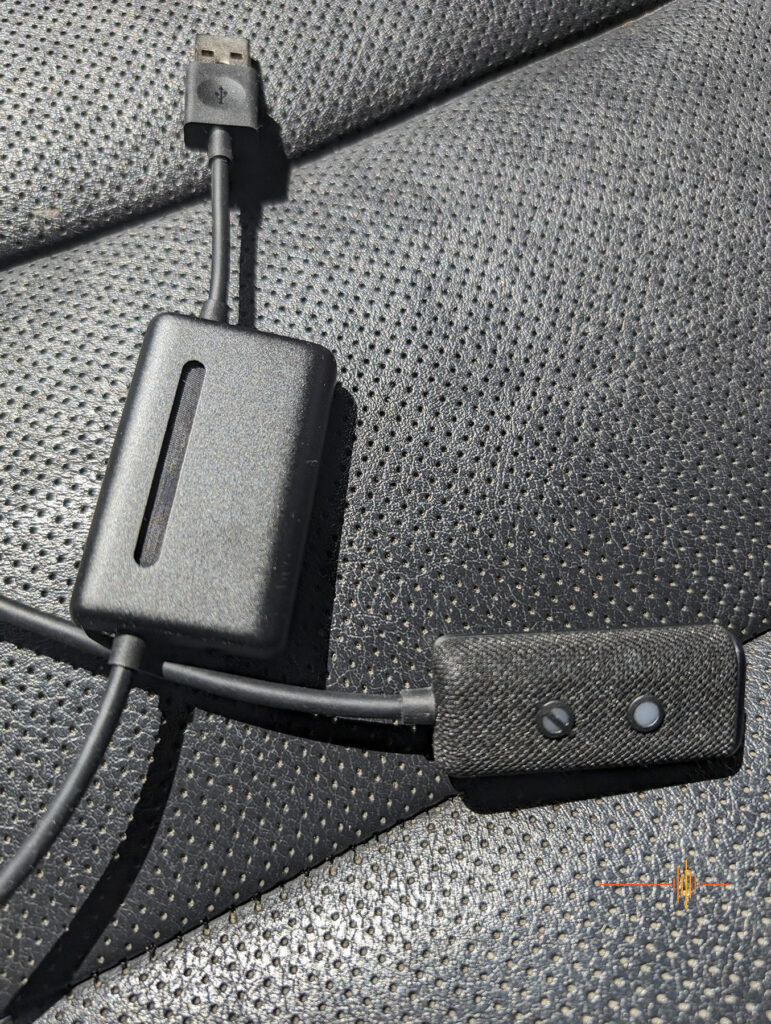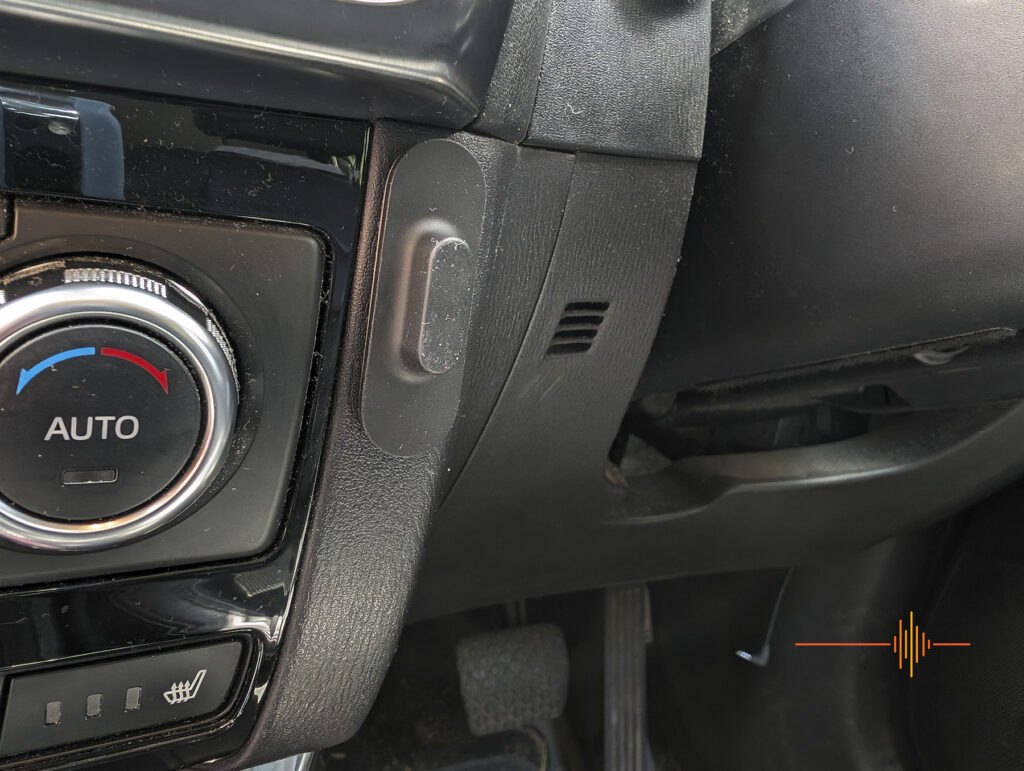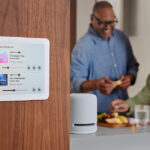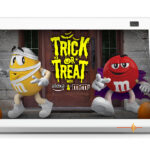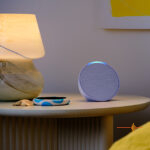Any modern vehicle would come with Android Auto or Apple CarPlay baked into the entertainment system. This is simple enough when the handsets are dominated by iPhones or Androids along with their respective home ecosystems. But what about older cars, or for people wedded to the Amazon Alexa ecosystem?
With thanks to Amazon, we get to quite literally road test the Echo Auto gen 2.
First Impressions
The Echo Auto Gen 2 is a small microphone at the end of a wire and a 90cm cable to a small speaker. Another 5cm of cabling comes out of the speaker side and ends with a USB-A port.
The microphone part is covered in fabric with two buttons – mute/unmute and activate Alexa. The top part is a small LED bar to provide some visual feedback on the status.
The unit comes with a dual port 12-volt car power adapter – USB-A for the Echo Auto, and USB-C for your phone.
There is also an optional 3.5mm cable to hook it up to the aux port of your stereo if necessary. By default Echo Auto wants to use Bluetooth to connect to your phone and relay it to the car entertainment system.
There is a small magnetic mount to hold the microphone, Amazon recommends this to be stuck to a hard surface away from air vents. It is highly recommended not to try sticking it to soft plaster, leather or fabric.
Getting Started
The hardware side is easy enough, you need to place the microphone in a convenient location to pick up the driver’s voice. The challenge is to still be close enough to reach a power source.
The magnetic mount makes it simple to put on and take off as needed, especially if you are not one inclined to leave anything in plain sight when the car is parked.
The good news is that the Echo Auto can power off any USB port, even the apathetic USB port on my 2015 Mazda was sufficient to power up the Echo Auto
To get things going, you will need the Alexa app on your phone and of course, an Amazon account. The Echo Auto will verbally direct you to do that and once you are in the app, it is a follow the bouncing ball.
You have to go to add a device, select car accessory. There is a giant prompt to tell you not to set the Echo Auto up whilst driving, common sense but apparently that is not common at all.
Getting the Echo Auto working requires the permission to access Bluetooth. Because I run an Android phone, the options to select how to play music in the car are biased for Android Auto. I expected for iPhone users you will see a similar selection for CarPlay.
Further setup allows you to personalise your Echo Auto usage, for Entertainment, Communications and/or Location and maps. You can customise your providers here, although it seems to be limited to what is available in Alexa Skills rather than app on your phone. For example I use Podcast Addict on my phone, but I have no ability to tell Alexa to use that to play podcasts instead of Spotify.
In Use
I’ll just put it here, if you are confused as to why there is Android Auto and Apple CarPlay support here, so am I.
But let’s just rewind a little here. My daily driver, the 2015 Mazda, comes with MZD only. Bluetooth or aux connectivity only, no Android Auto or Apple CarPlay support. These support came in the 2018 models by default and could be backdated to my car, except by the time I was considering paying for the upgrade we were just on the verge of COVID and the subsequent wholesale change of driving pattern made it a luxurious expense rather than a necessity.
With this background, adding the Echo Auto into my car made logical sense. It offers a cheap way to add smarts to my car as Mazda asks for AUD$500+ to retrofit that feature into my MZD. Also as an aside, voice control on MZD really sucks.
So how well does the Echo Auto work? Well starting from the beginning, from car start up to the phone being connected to Echo Auto is around 8 seconds. It powers up super fast as the first notification sound comes pretty much straight after the car powers up, then a few more seconds later the second notification sound indicates a connection. It is substantially faster than Mazda’s MZD powering up, initialising and finally ready with a working Bluetooth connection.
The microphone pick up is excellent, because I set up the voice recognition under the worse possible conditions with kids talking, random road noise through an open window and probably pigeons and seagulls having a fight for chips close by. It didn’t faze Alexa and it recognises me on all my devices and greets me by name in any situation.
Essentially the Echo Auto is Alexa on the go. Everything you are accustomed to at home now can work on the road as well.
When the phone is connected to the Echo Auto, it also by default puts your phone on a driving mode to reduce distraction. If you are not the driver you can then tap out of that.
But that is the extent of the smarts part.
General Observations
This one is hardly Amazon’s fault but given my car does not have Android Auto, I have to have the MZD set to Bluetooth in order for the Echo Auto to work. The alternative is using the aux cable which will need me to set MZD to aux mode. That means if I am listening to old school free to air radio then Echo Auto would work, but you won’t hear a thing.
Swapping over to the other car with Android Auto baked into MZD, this issue goes away when the phone is hooked up to the Android Auto (either wired or wireless). But that begs the question, why do I need Alexa to tell my Android phone to tell Android Auto what to do?
For more nuanced needs, I still need to interact with my phone in order to get the experience I want. Like navigation, I still need to start the route on my phone. Or podcasts where I use an Alexa unsupported app so I have to manually start the app and choose the episode I want.
Yes I can ask for the weather, find out the opening and closing hours of a business (although that was a little hit and miss sometimes with getting the right business name and location). But without a full buy-in to the Amazon ecosystem, the benefits here are limited.
Gripes
Other than what I mentioned above, I need to point out about the cable lengths.
I have USB ports in the cavity immediately below the dash so I can mount Echo Auto near the steering wheel and close to the driver. But if I had to rely on the 12V ciggie lighter port, then that is inside the console between the driver and the front passenger seat. Which means the in-built microphone will be inside the compartment as well given it is just 5cm from the USB port. And the remaining 90cm travel will get you only some way towards the driver.
Conclusions
I have to be honest and say that I am find it a challenging to identify a great use case for the Echo Auto. It requires a cross over of an Alexa enabled home and an old car to get the most out of it, preferably a car that does not have Bluetooth. That is a pretty big call.
In my usage of it even with just a Bluetooth enabled car, it is a bit of a novelty rather than a true value add device. Bluntly speaking a car mount using the default assistants on your smartphone is substantially cheaper than the asking price of AUD$99, nevermind that I have still yet to find a car mount that I like.
There has been some storm clouds over the future of Alexa, and the reality is that outside of the home it is an assistant that is wholly reliant on your smartphone – entirely made by competitors.
DRN would like to thank Amazon for providing the review unit.


